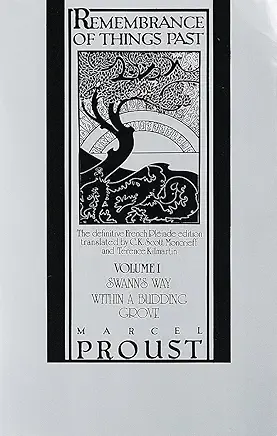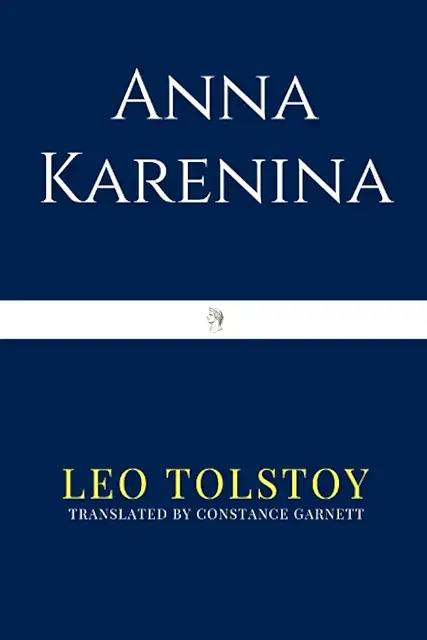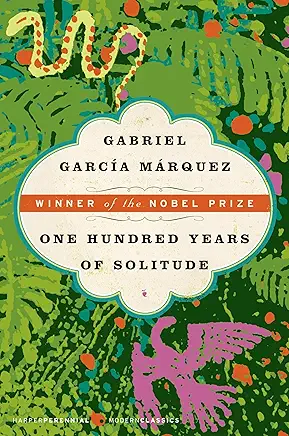Five Books to Read Before You Die.
1. The Magic Mountain
The Magic Mountain by Thomas Mann is a philosophical novel set in a Swiss sanatorium in the years leading up to World War I. The story follows Hans Castorp, a young German engineer who arrives at the sanatorium to visit his cousin for three weeks, only to remain for seven years as he becomes absorbed in the strange, introspective world of illness, time, and intellectual debate.
Throughout his stay, Hans encounters a range of eccentric characters—most notably the humanist Lodovico Settembrini and the radical nihilist Leo Naphta, who represent opposing ideological forces. As Hans navigates love, mortality, and conflicting worldviews, the sanatorium becomes a microcosm of European society on the brink of collapse.
Blending realism with symbolism, The Magic Mountain explores themes of time, illness, identity, and the clash of ideologies, ultimately questioning the meaning of progress and the role of the individual in history.
Thomas Mann (1875–1955) was a German novelist, short story writer, and essayist, widely regarded as one of the most important literary figures of the 20th century. He won the Nobel Prize in Literature in 1929 for his novel Buddenbrooks, a family saga that established his reputation.
Mann's works often explore themes of art, intellect, politics, illness, and the conflict between the individual and society. His most famous novels include The Magic Mountain, Death in Venice, Doctor Faustus, and Joseph and His Brothers. Deeply influenced by German and European philosophical thought—especially that of Nietzsche, Schopenhauer, and Freud—his writing blends rich symbolism with social critique.
Forced into exile by the rise of the Nazi regime.
While at Princeton and later in California, Mann developed friendships with prominent émigrés, including Albert Einstein, with whom he shared anti-fascist views and deep respect for humanistic values. Mann used his voice and writings to warn against totalitarianism and defend democracy throughout World War II. He died in Switzerland in 1955.
Mann lived in Switzerland and later the United States, where he became an outspoken critic of fascism. He died in Switzerland in 1955.
2. Ulysses
Ulysses by James Joyce is a groundbreaking modernist novel that follows a single day—June 16, 1904—in the life of Leopold Bloom, an ordinary man in Dublin. Structured loosely on Homer’s Odyssey, the novel parallels Bloom’s wanderings through the city with Odysseus’s epic journey home.
Alongside Bloom, the story weaves in Stephen Dedalus, a young, brooding writer (a stand-in for Joyce himself), and Molly Bloom, Leopold’s wife, whose internal monologue ends the novel in a famous stream-of-consciousness passage.
Through experimental prose, shifting styles, and deep interior monologues, Ulysses explores themes of identity, memory, sexuality, and the richness of everyday life. It’s widely regarded as one of the most important—and challenging—works of modern literature.
James Joyce (1882–1941) was an Irish writer and one of the most influential figures in modernist literature. Born in Dublin, he was educated by Jesuits and later studied at University College Dublin. He left Ireland in his early twenties, living most of his life in Trieste, Zurich, and Paris, though Dublin remained the central setting of his major works.
Joyce revolutionized narrative style with his use of stream of consciousness, shifting perspectives, and experimental language. His major works include Dubliners (1914), A Portrait of the Artist as a Young Man (1916), Ulysses (1922), and Finnegans Wake (1939).
Often controversial and frequently censored, Joyce’s work challenged literary norms and reshaped the form of the novel. He died in Zurich in 1941, still in exile from the country that shaped him.
3. Remembrance of Things Past
Remembrance of Things Past (also known as In Search of Lost Time) by Marcel Proust is a monumental, seven-volume novel that explores memory, time, art, and identity. The story follows an unnamed narrator as he reflects on his life—from childhood in late 19th-century France to adulthood—triggered by involuntary memories, such as the famous taste of a madeleine dipped in tea.
Blending deep psychological insight with rich social observation, the novel examines love, jealousy, social ambition, and the passage of time, particularly within the French aristocracy and bourgeoisie. Characters and events are revisited and reinterpreted across thousands of pages, showing how memory reshapes reality.
Widely considered one of the greatest literary achievements of the 20th century, Proust’s work is celebrated for its introspective depth and exquisite, often labyrinthine prose.
Marcel Proust (1871–1922) was a French novelist, essayist, and critic best known for his monumental work In Search of Lost Time (À la recherche du temps perdu), published in seven volumes between 1913 and 1927. Born in Paris to a wealthy family, Proust was educated at elite schools but struggled with poor health throughout his life, including severe asthma.
Much of his later life was spent in near-isolation, writing in a cork-lined room while reconstructing memories of his youth and society life. His work is known for its deep psychological insight, exploration of memory—especially involuntary memory—and intricate, lyrical style.
Proust died in 1922 before seeing the final volumes of his masterpiece published, but he remains one of the most influential writers in literary history.
4. Anna Karenina
Anna Karenina by Leo Tolstoy is a tragic novel about love, infidelity, and society in 19th-century Russia. It centers on Anna, a beautiful, aristocratic woman trapped in a loveless marriage. When she begins a passionate affair with the dashing officer Count Vronsky, she is shunned by society and torn between her desires and her duties as a wife and mother.
Parallel to Anna’s story is that of Konstantin Levin, a landowner seeking meaning in work, family, and faith—often seen as Tolstoy’s alter ego. As Anna’s life unravels under the weight of social pressure and emotional turmoil, Levin’s journey moves toward inner peace.
The novel explores themes of love, jealousy, morality, hypocrisy, and the constraints of societal norms, and is widely considered one of the greatest works of world literature.
Leo Tolstoy (1828–1910) was a Russian novelist, philosopher, and social reformer, widely regarded as one of the greatest writers in history. Born into an aristocratic family, he is best known for his epic novels War and Peace and Anna Karenina, which explore themes of history, love, morality, and the human condition.
Later in life, Tolstoy underwent a spiritual crisis and embraced a form of Christian pacifism, rejecting material wealth and organized religion. His ideas on nonviolence influenced figures like Mahatma Gandhi and Martin Luther King Jr. Tolstoy’s moral teachings and literary brilliance left a lasting mark on both Russian culture and world literature.
5. One Hundred Years of Solitude
One Hundred Years of Solitude by Gabriel García Márquez is a sweeping, magical realist novel that tells the story of the Buendía family over seven generations in the fictional town of Macondo. Founded by José Arcadio Buendía, the town becomes the backdrop for a blend of history, myth, and political allegory.
As the Buendías struggle with love, fate, war, and solitude, their lives are shaped by repeating patterns and a sense of inescapable destiny. The novel blends the fantastical with the everyday, portraying ghosts, miracles, and time loops as part of life’s texture.
A profound meditation on memory, power, and human isolation, One Hundred Years of Solitude is considered a landmark of Latin American literature and a defining work of magical realism.
Gabriel García Márquez was a Colombian novelist, short story writer, screenwriter, and journalist, born on March 6, 1927, in Aracataca, Colombia. He is widely considered one of the most significant authors of the 20th century and a leading figure in the Latin American literary boom. García Márquez’s writing is renowned for its unique blend of magical realism—a literary style that combines magical elements with realistic settings and events—bringing to life the rich culture, history, and politics of Latin America.
His most celebrated work, One Hundred Years of Solitude (1967), is a multi-generational saga about the Buendía family in the fictional town of Macondo. The novel’s lyrical prose, intricate narrative, and imaginative storytelling made it an instant classic and earned him international acclaim. The book is often credited with bringing Latin American literature to the global stage.





